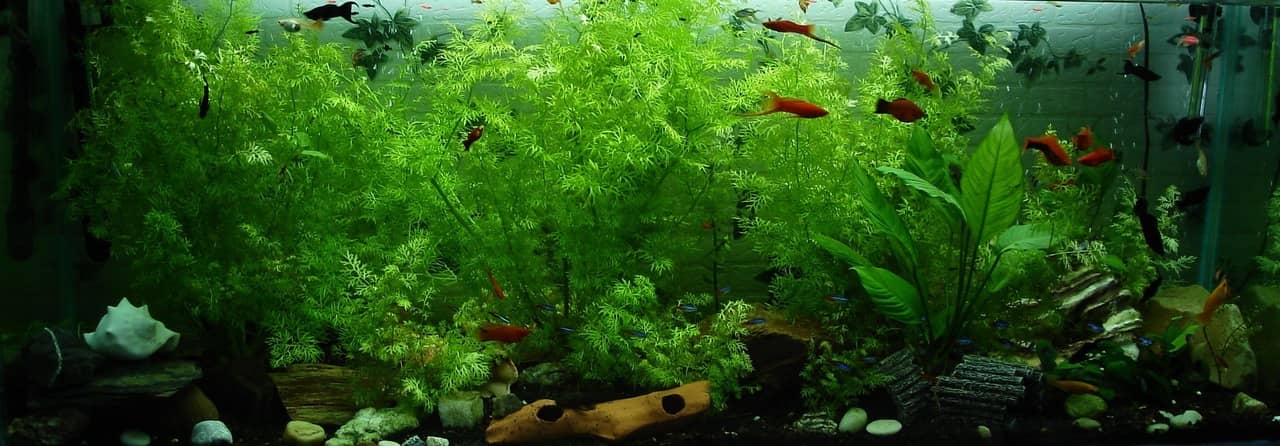How to Take Care of Freshwater Aquatic Life: 4 Key Tips

According to experts, keeping an aquarium has health and emotional benefits. A fish tank also graces your space with beauty and makes an excellent addition to your home interior. If you are considering becoming an aquarist, brace yourself for the benefits. Survey has placed fish as the third most popular pet kept among the American household.
The excellent news is that caring for freshwater aquatic life is one of the most accessible pet types you will ever experience. While setting up an aquarium may appear a bit engaging, maintaining it is stress-free and effortless if you follow the proper steps.
Here are some tips to take care of freshwater aquatic life.
1. Get the Right Aquarium
The kind of aquatic life and the number you intend to keep will determine the size of the fish tank you will need. Fish tanks come in different sizes, from desktop aquariums that accommodate a single betta to large aquariums best for multiple types of fish and plants.
Determine the maximum size of an aquarium you can have before looking for the fish you intend to keep and the number of aquatic life. Do not force fish into a habitat that does not suit them. Also, consider other tank occupants if you plan to have plants that provide great hiding spots and other aqua pets such as African dwarf frogs to keep the fish company. African dwarf frogs are calm and peaceful freshwater aquarium inhabitants, and they happily share tanks with other non-predatory frogs and fish. You can research online or visit Fishkeeping World for more on African dwarf frogs if you wish to have them as part of the aqua life.
Choose the correct position in your space for the aquarium. Since you want to display the splendor of the fish tank, place it within eyesight, but avoid busy parts of the house as commotion will disturb the fish.
2. Optimal Aquarium Water Conditions
Any underwater creature needs a proper environment to thrive. Different tank occupants require varied water conditions to thrive; hence you may need aqua life that needs the same water conditions in a tank. Visit Fishkeeping World for more on African dwarf frogs to understand the best company to keep alongside, which require the same water conditions.
Tap water contains many properties that need some balance to support aquatic life in an aquarium. Use a biological aquarium supplement and a dechlorinating agent to condition the water properly.
Depending on the species, freshwater aquatic life thrives with a pH level of about 6.8 and 7.5. This pH level range offers a natural environment that keeps your fish from illness. Invest in a pH test kit to check the pH level.
Do not place the aquarium near a sunny window, next to air vents or heating systems, as changes in water temperature affect aquatic life. Invest in a marine heater to maintain the right temperature. Also Read – How To Turn Your Love For Pets Into A Lucrative Career
3. Prepare for Aquarium Maintenance
Replace about 25 percent of water in your aquarium monthly to keep nitrate concentration at a safe level and keep it clean.
Use a gravel vacuum along the bottom of your tank to siphon out debris and water. Algae build-up, which appears as a cloud on the glass or makes the water look murky, leads to decreased oxygen levels in the water. Use an aquarium algae magnet or tank scrub brush to clean algae from the tank.
4. Proper Aquarium Acclimation

Get the appropriate water parameters for nitrite, nitrate, ammonia, and pH levels for the aqua life species you intend to get. Consider testing your home setup to ensure it is a close match.
Once you get your aquatic life home, float the bag containing your aqua life for at least 15 minutes in the aquarium. Add a quarter cup of water at five minutes intervals until the bag is full of gelling the chemistry and temperature. This allows the aquatic life to acclimate to their new home without the shock of sudden changes.
Conclusion
Observe the aquatic life for any changes in appearance, appetite, or behavior by taking a few minutes to check regularly. Some planning and forethought are crucial in the care of freshwater aquatic life.



